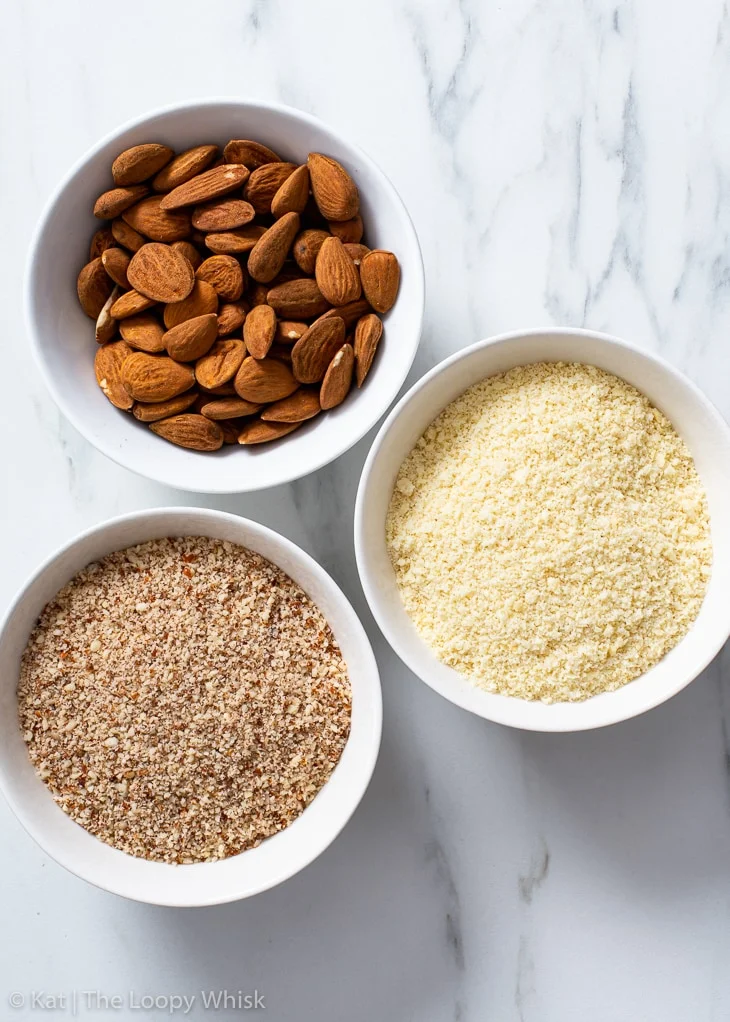Substitute Flour for Almond Meal: A Parent’s Guide to Nut-Free Baking
Hey there, wonderful parents! Are you looking for a fantastic way to tweak those scrumptious recipes that call for almond meal, especially with little ones in mind who may have allergies or dietary needs? Fret not! You’ve just found the cheeriest guide to substitute flours that are both nutritious and delightful!
Why Substitute Almond Meal?
Almond meal is a popular ingredient in many recipes, known for its rich flavor and health benefits. However, for those with nut allergies or for families who prefer to maintain a nut-free kitchen, using almond meal might not always be possible. Additionally, with the ever-growing interest in gluten-free and specific dietary options, having a go-to list of alternatives can be a lifesaver. So, let’s dive into the world of alternative flours that are both kid-approved and parent-preferred!
Understanding Almond Meal
Before we bound off to alternative pastures, it’s important to understand what almond meal offers to our baked goods. Almond meal, made from ground almonds, provides moisture, a tender crumb, and a dose of protein to recipes. It’s a gluten-free and low-carb option beloved by many. So when we substitute, we’re looking for something that can play all those roles without missing a beat!
Nut-free and Gluten-free Options
When choosing an alternative flour, you want to consider not only the dietary restrictions but also the properties of the almond meal you’re trying to mimic. Here are some fabulous options that tick all the boxes:
- Sunflower Seed Meal: Ground sunflower seeds make for an excellent nut-free, gluten-free substitute that brings a similar texture and moisture level to recipes as almond meal does.
- Pumpkin Seed Meal: Another great nut-free option that adds a unique flavor profile while maintaining a moist and delicious texture in your baked goods.
- Oat Flour: If gluten isn’t a concern, oat flour can provide the tenderness and moisture you’re looking for, plus it’s easy to make at home from rolled oats!
Remember, each substitute flour brings its own unique flavor and texture, so you may want to try a few different ones to find your family’s favorite.
Substitution Ratios and Considerations
Switching out almond meal for another flour isn’t always a one-for-one deal. You’ll need to consider the density and absorption properties of your alternative flour. Here’s a general guide to get you started:
- Sunflower Seed Meal: Use a 1:1 ratio when substituting for almond meal. Be aware that sunflower seed meal can sometimes react with baking soda and turn baked goods green, but adding a bit of lemon juice can neutralize this reaction.
- Pumpkin Seed Meal: Also substitute at a 1:1 ratio. This meal can have a more robust flavor, so it works well in recipes with spices and chocolate.
- Oat Flour: You might need to use slightly more oat flour, about 1.25 cups for every 1 cup of almond meal, due to its lower fat content and different absorption qualities.
Finding the perfect flour substitute might require a bit of experimentation, and that’s perfectly okay! The adventure in baking comes from trying new things and discovering what makes your family’s taste buds dance with joy.
And now, are you ready to roll up those sleeves and start the aromatic alchemy? Keep reading for more in-depth tips on how to use these flours in your recipes, how to balance ingredients for perfect texture, and delicious, family-tested recipes that transform the ordinary into the extraordinary!
So, grab your whisk and a sprinkle of optimism, because we’re about to embark on a culinary journey that’s sure to end with happy hearts and satisfied smiles. Stay tuned for scrumptious discoveries as we delve deeper into the world of flour substitutes!

5 Things Parents Should Know When Substituting Flour for Almond Meal
1. Start with a Game Plan
When swapping almond meal for another flour, having a strategy is essential. Consider the final texture and flavor you want in your baked goods. Some alternatives, like coconut flour, are more absorbent and may require additional liquids, whereas a flour like wheat (if gluten isn’t a concern) can often be used in equal measure.
2. Nutritional Needs Matter
If nutrition is a primary concern, seek out substitutes that offer similar benefits. Almond meal is high in protein and healthy fats, so replacing it with something like quinoa flour might preserve these nutritional elements. Always check the substitute’s nutritional profile to make sure it fits your family’s dietary requirements.
3. Be Allergy Aware
Navigating food allergies can be tricky, but many almond meal alternatives are allergen-friendly. Flours like rice, coconut, or chickpea flour are often safe for those with nut allergies. Always read labels to ensure the production facility doesn’t process other allergens that could contaminate your flour of choice.
4. The Power of Blending
Don’t be afraid to blend different flours to achieve the perfect consistency and taste. Combining oat flour with a little coconut or tapioca starch can create baked goods that closely resemble those made with almond meal. A blend can balance out flavors and give you better control over texture and moisture levels.
5. Keep an Eye on the Bake
Substitute flours can alter baking times and temperatures. You might find that your creations bake faster or need a lower temperature than those made with almond meal. Keep a close watch on your oven and be ready to adjust as necessary, always aiming for that golden-brown perfection!
Adapting Techniques for Substitute Flours
Each substitute flour behaves differently, and a few tweaks in your baking method can result in optimal outcomes. For instance, when using coconut flour, mixing your batter a little bit longer can give coconut flour the time to properly absorb moisture. For flours with denser textures, like buckwheat, sifting might be your new best friend to ensure a light and airy cake or muffin.
Delicious Recipes with Substituted Flour
Ready for some kitchen excitement? We’ve taken classic family favorites and given them a nut-free makeover. Imagine the glee when you serve up amazing pancakes made with oat flour or the family tradition of cookies now featuring sunflower seed meal. These recipes are waiting for you to explore and enjoy, each one carefully crafted to be both worry-free and full of flavor.
From the morning radiance of fluffy pancakes to the cozy evening treat of chocolate chip cookies, the right substitute flour can turn every bite into a moment of joy. Embrace the change, experiment with love, and bake memories that are not only sweet but safe for everyone at the table. With a dusting of creativity and these handy tips, your baking will continue to earn the biggest smiles and the loudest ‘yum’s’ from the whole family!
And remember, when you see those little faces light up with delight at your latest culinary creation, it’s all worth it. So, happy baking, dear parents, and here’s to discovering the deliciousness of diversity in flours!
For more great articles please see here. For more information see here
Disclaimer
The articles available via our website provide general information only and we strongly urge readers to exercise caution and conduct their own thorough research and fact-checking. The information presented should not be taken as absolute truth, and, to the maximum extent permitted by law, we will not be held liable for any inaccuracies or errors in the content. It is essential for individuals to independently verify and validate the information before making any decisions or taking any actions based on the articles.




